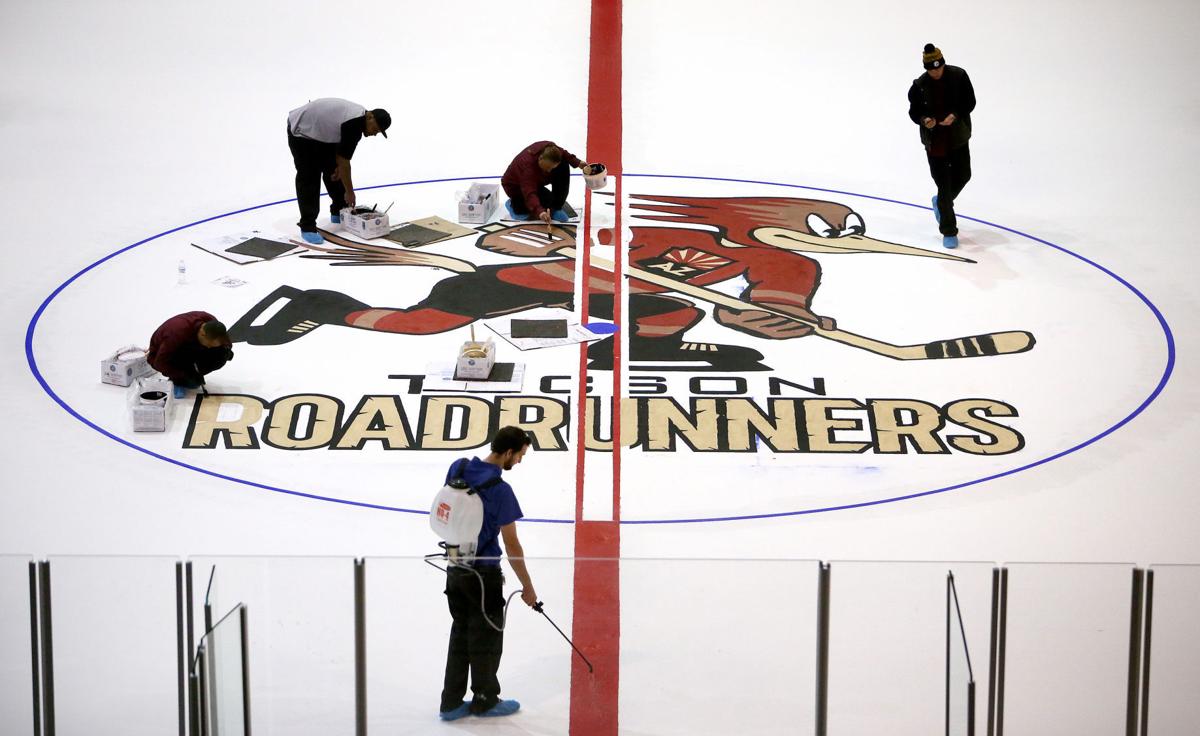David Andrews has probably seen just about everything possible over the past 23 years in the American Hockey League, but none of it was the “Roadrunner Cam” video-board feature at the Tucson Arena. As the 1970s Road Runner cartoon theme song blared over the loudspeakers, and arena video cameras found hundreds of fans in the stands furiously running in place. The longer it went, the funnier it got.
The president, CEO and commissioner of the AHL looked up from his seat on press row and cocked his head side to side. Thousands of Tucson hockey fans laughed and clapped. It was smiles all around.
There was no doubt that Tucson was having fun late in the Roadrunners’ inaugural season.
The hockey world was in another dimension in 1994 when Andrews took over the highest-level minor hockey league. A glut of leagues muddied the waters and threatened to leave the venerable AHL behind. Not every NHL team had an AHL affiliate, and the league’s reach was stuck mainly in the northeast.
The rival International Hockey League is long gone, absorbed by the AHL. Each AHL team neatly has an NHL parent. The league stretches all the way to California, too, with a generation of franchise migration westward mostly completed. AHL teams now sit in better geographical proximity to their major league counterparts.
This is where Tucson comes in. The Roadrunners’ birth this year is one of the final pegs in the AHL shuffle. The AHL Pacific Division better reflects the western NHL teams’ layout, saving loads of money and time when sending players back and forth, and allowing more hands-on development time with the major league staffs.
The NHL’s Arizona Coyotes have repeatedly expressed satisfaction with their Tucson affiliate, and its progress from a mere idea this past summer to an actual operation is nothing short of miraculous. That was a good description up to the mid-point of this first season, when Tucson sat at the top of the Pacific Division, and for a while at the top of the entire league.
Player and schedule realities set in after the New Year, and the Roadrunners have faded as other AHL teams revved up their playoff runs. There was only one miracle left for Tucson this season, perhaps, and that was the return of fallen captain Craig Cunningham this past Saturday night to drop a ceremonial puck at the TCC.
Be honest, how many fans who saw Cunningham collapse this past November expected to see him alive and upright again on the ice? Yes, that was as close to a hockey miracle that we will probably ever see in any season.
That moment brought commissioner Andrews to Tucson, to check in on the new franchise and witness firsthand Cunningham’s return.
It gave the longtime AHL honcho a chance to address season ticket holders, too, before last Sunday’s matinee game. Flanked by Roadrunners’ president Bob Hoffman and general manager Doug Soetaert, Andrews calmly explained his vision for a stable AHL, and his admiration for Tucson’s progress.
Fans had some good questions about arena operations, the need for a new community ice rink — and also wondered about the giant, angry elephant in the room.
“What happens to the Roadrunners if the Coyotes leave Arizona?” one fan wondered, bringing a hush to the gathering.
Well … no one really knows the answer to that one.
Hoffman cited the 10-year lease deal designed to keep the Roadrunners at the TCC, but he didn’t mention contractual escape clauses that could activate after the third year. The panel speculated that movement of the Coyotes could likely keep the NHL team in the West, giving a better possibility that the Roadrunners could stay in Tucson — but all of it just a guess.
Remember, too, that talk of the Coyotes leaving Arizona is also speculation, as it has been for years now. Of course, any new arena in the Phoenix area — the key to the Coyotes survival in Arizona — is just talk, too.
Businesses and fans alike hate uncertainty and speculation. Tucson hockey fans, just now falling in love with these Roadrunners, don’t want to spend one moment worrying about them leaving.
Buck up, Roadrunners fans. I don’t think there is reason to worry. Hoffman says season ticket sales are ahead of expectations already for next season, and the organization appears more and more accepted by Tucson with each passing week.
Andrews agreed that the hockey future is bright in Tucson, and he told me that the Roadrunners are one of the most impressive new organizations in the AHL.
He should know. Now that the commissioner experienced Tucson’s “Roadrunner Cam,” he’s seen it all.





